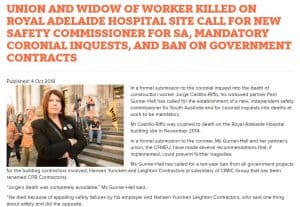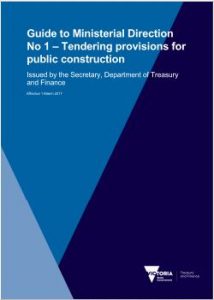ON 22 November 2018, two days before the State Election, the Secretary of the Department of Treasury and Finance released a document called the “Release of costing of election commitment“. Most of the media attention was on the removal of a self-imposed “debt cap” by Treasurer, Tim Pallas, but there is an interesting footnote that seems to involve using some of WorkSafe Victoria’s premium income as a dividend to fund infrastructure.
Attachment A – “Summary of Labor’s 2018 Election Commitments” – lists the following table (figures are in millions):
Footnote 3 says:



 South Australia’s occupational health and safety (OHS) regulator,
South Australia’s occupational health and safety (OHS) regulator,  With little surprise, at the Australian Labor Party (ALP) Conference in Victoria on 26 May 2018, Premier
With little surprise, at the Australian Labor Party (ALP) Conference in Victoria on 26 May 2018, Premier  Victoria is the latest Australian State to introduce laws into Parliament that establish a licencing scheme for
Victoria is the latest Australian State to introduce laws into Parliament that establish a licencing scheme for  Innovation in occupational health and safety (OHS) is often encouraged by government but government processes and policy can also discourage and limit this. An obvious example is where government insists on compliance with OHS laws in its tendering criteria but acknowledges that the tender safety criteria remains outdated and, privately, that OHS compliance is not enough to ensure a safe and healthy workplace.
Innovation in occupational health and safety (OHS) is often encouraged by government but government processes and policy can also discourage and limit this. An obvious example is where government insists on compliance with OHS laws in its tendering criteria but acknowledges that the tender safety criteria remains outdated and, privately, that OHS compliance is not enough to ensure a safe and healthy workplace.